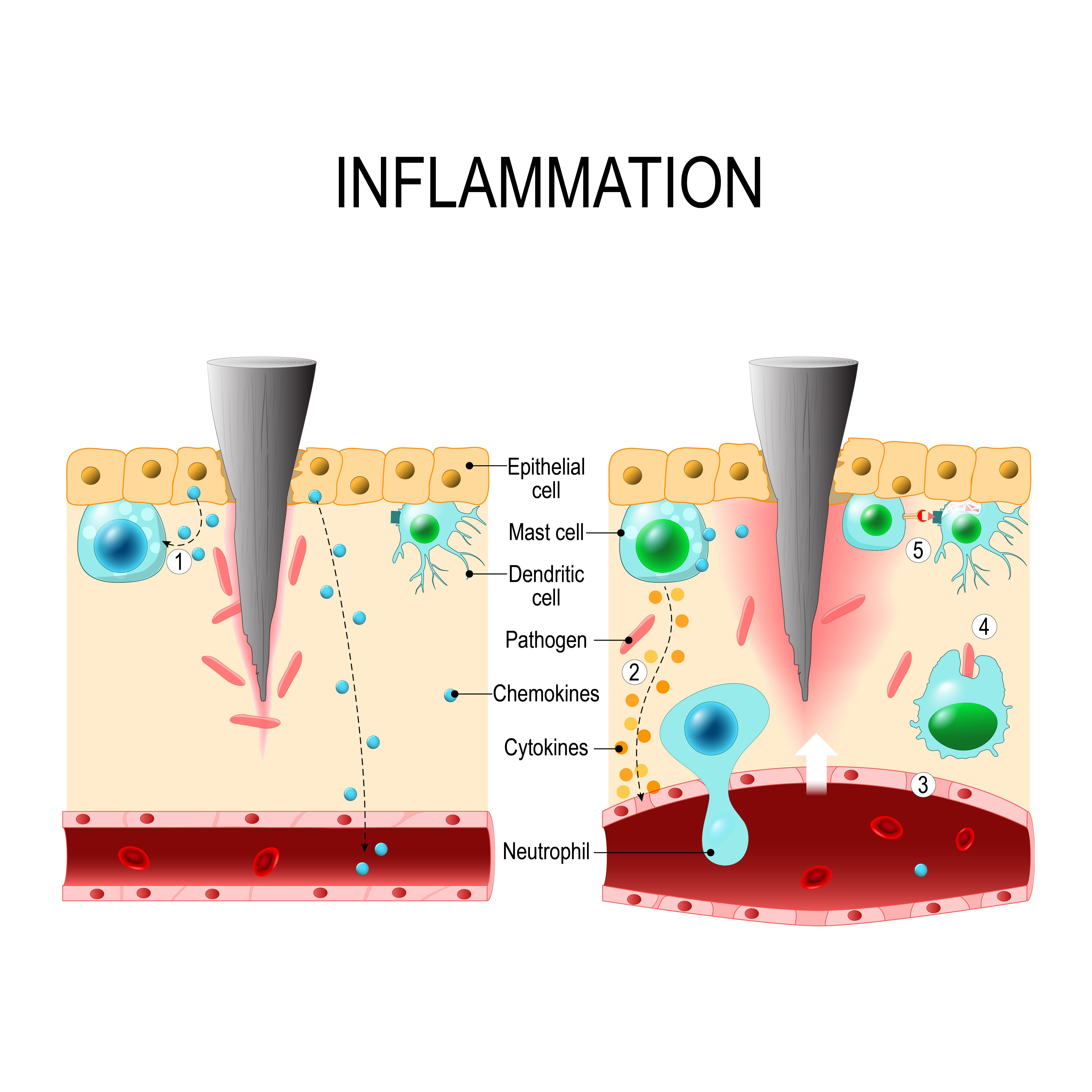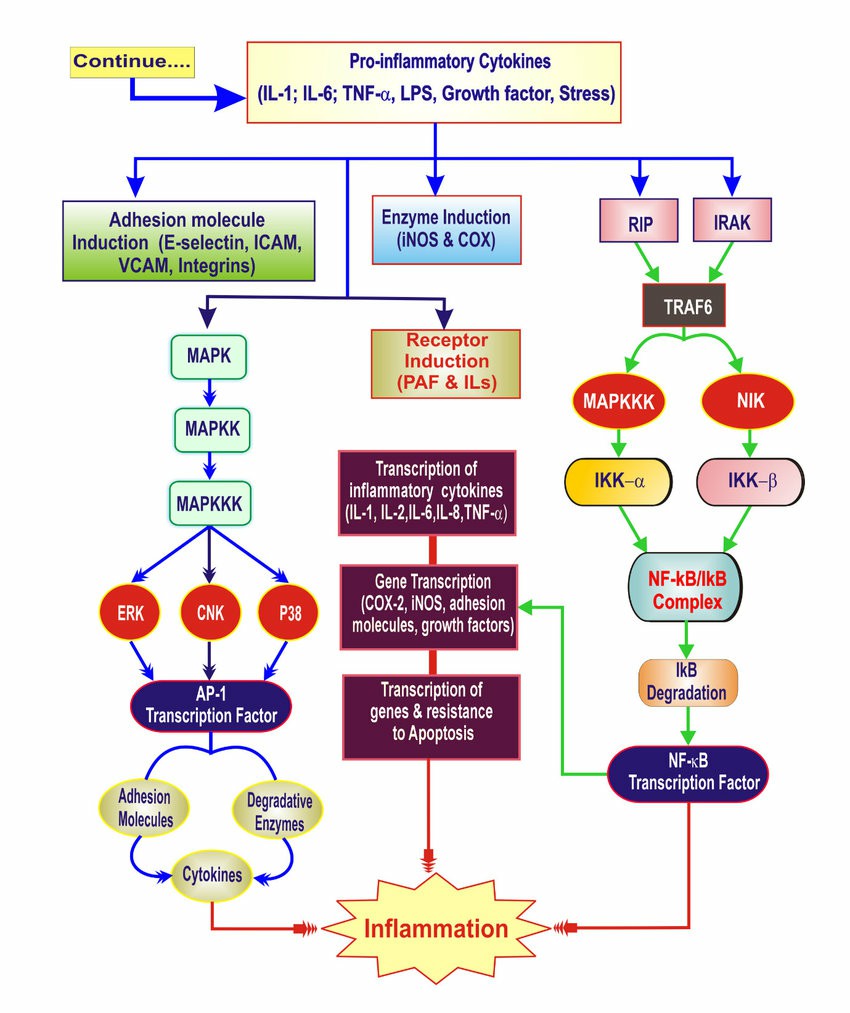Blood-brain Barrier Permeability
Creative BioMart Blood-brain Barrier Permeability Product List
Immunology Background
Available Resources for Inflammation Research
At Creative BioMart, we strive to lead the way in the field of inflammation research. We are committed to continually updating our portfolio and resources to provide researchers with the tools and information listed above on inflammation to advance the field.
- Our extensive product portfolio includes essential products, such as recombinant proteins, which play a crucial role in revealing the functions and mechanisms of inflammation. These products are designed to enable researchers to gain a deeper understanding of inflammation and its role in various diseases.
- We have a team of experienced experts who possess in-depth knowledge of inflammation research. They are dedicated to offering customized solutions that cater to the specific needs of each researcher. By understanding the unique requirements of our customers, we can provide tailored products and services that facilitate their research.
- Furthermore, we also provide comprehensive resource support, including valuable information on involved pathways, protein functions, interacting proteins, and more. We aim to empower researchers by equipping them with the necessary resources to enhance the impact of their research efforts.
At Creative BioMart, we are committed to driving progress in inflammation research and supporting researchers in their quest for scientific advancements.

About Inflammation
Inflammation is a fundamental biological response of the immune system to harmful stimuli, such as infections, tissue damage, or irritants. It is a complex process that involves various cellular and molecular components working together to protect the body and promote tissue healing. Inflammation can occur in response to both internal factors, such as autoimmune reactions, and external factors, such as infections or injuries.
The primary purpose of inflammation is to eliminate the initial cause of tissue injury, clear any damaged cells or pathogens, and initiate the repair process. While inflammation is essential for maintaining tissue homeostasis and promoting healing, uncontrolled or chronic inflammation can contribute to the development of numerous diseases, including autoimmune disorders, cardiovascular diseases, and cancer.
The inflammatory response is characterized by a series of coordinated events:
- Recognition of the Stimulus: The immune system recognizes the presence of harmful stimuli, such as pathogens or damaged cells, through pattern recognition receptors (PRRs) on immune cells. PRRs can detect specific molecular patterns associated with pathogens, known as pathogen-associated molecular patterns (PAMPs), or patterns released from damaged tissues, known as damage-associated molecular patterns (DAMPs).
- Vasodilation and Increased Vascular Permeability: In response to the stimulus, blood vessels in the affected area dilate, leading to increased blood flow. This dilation allows immune cells and signaling molecules to reach the site of inflammation more efficiently. At the same time, the permeability of blood vessels increases, enabling immune cells and fluid to move from the bloodstream into the surrounding tissue.
- Immune Cell Activation and Recruitment: Various immune cells, including neutrophils, macrophages, and lymphocytes, are activated and recruited to the site of inflammation. These cells release chemical messengers called cytokines, which further amplify the immune response and attract more immune cells to the inflamed area.
- Phagocytosis and Pathogen Clearance: Phagocytic cells, such as neutrophils and macrophages, engulf and destroy pathogens or cellular debris present at the site of inflammation. This process helps eliminate the source of the injury or infection.
- Tissue Repair and Resolution: Once the harmful stimulus is neutralized and pathogens are cleared, the inflammatory response transitions into the resolution phase. Immune cells release anti-inflammatory cytokines and growth factors, promoting tissue repair and regeneration. The resolution phase aims to restore tissue homeostasis and minimize inflammation.
While acute inflammation is a beneficial and self-limiting process, chronic inflammation can occur when the inflammatory response persists or becomes dysregulated. Chronic inflammation can lead to tissue damage, scarring, and the recruitment of immune cells that promote further inflammation. It is associated with various diseases, including rheumatoid arthritis, inflammatory bowel disease, and atherosclerosis.
Understanding the mechanisms of inflammation is crucial for developing therapies to manage and treat inflammatory conditions. By targeting specific components of the inflammatory response, researchers aim to modulate and control inflammation to promote better health outcomes.
 Fig.2 The inflammatory cascade. (Patil KR, et al., 2019)
Fig.2 The inflammatory cascade. (Patil KR, et al., 2019)
Research and New Advances in Inflammation
- Targeting Inflammatory Pathways: Researchers have identified specific molecular targets within the inflammatory pathways that can be exploited for therapeutic intervention. For example, biologic drugs targeting pro-inflammatory cytokines, such as tumor necrosis factor-alpha (TNF-alpha) and interleukin-1 (IL-1), have revolutionized the treatment of inflammatory diseases like rheumatoid arthritis and inflammatory bowel disease.
- Inflammatory Markers and Biomarkers: The discovery of inflammatory markers and biomarkers has provided valuable tools for diagnosing and monitoring inflammatory diseases. High-sensitivity C-reactive protein (hsCRP), for instance, is a widely used biomarker that indicates systemic inflammation and is associated with cardiovascular diseases. Other emerging biomarkers, such as cytokines, chemokines, and microRNAs, are being investigated for their potential diagnostic and prognostic value.
- Microbiome and Inflammation: The role of the gut microbiome in modulating inflammation has garnered significant attention. Studies have shown that alterations in the microbial composition or dysbiosis can contribute to immune dysregulation and chronic inflammation. Manipulating the gut microbiota through probiotics, prebiotics, or fecal microbiota transplantation (FMT) holds promise as a potential therapeutic approach for inflammatory disorders.
- Immunometabolism: The field of immunometabolism explores the intricate relationship between cellular metabolism and immune responses. Researchers have discovered that metabolic pathways, such as glycolysis, oxidative phosphorylation, and lipid metabolism, play a critical role in regulating immune cell functions and inflammation. Modulating metabolic pathways in immune cells could offer new therapeutic strategies for targeting inflammation.
- Resolution of Inflammation: Recent research has focused on understanding the mechanisms underlying the resolution of inflammation, aiming to identify novel therapeutic targets for promoting the resolution phase and preventing chronic inflammation. Lipid mediators, such as resolvins and protectins, have been discovered as key regulators of the resolution process. Harnessing the pro-resolving properties of these molecules may lead to the development of new anti-inflammatory therapies.
Our Advantages

If you have any questions, requirements, or cooperation intentions, please feel free to contact us. We very much look forward to working with you and helping you achieve research and commercial success.
References:
- Patil KR, Mahajan UB, Unger BS, et al. Animal Models of Inflammation for Screening of Anti-inflammatory Drugs: Implications for the Discovery and Development of Phytopharmaceuticals. Int J Mol Sci. 2019;20(18):4367. Published 2019 Sep 5. doi:10.3390/ijms20184367
- Chen L, Deng H, Cui H, et al. Inflammatory responses and inflammation-associated diseases in organs. Oncotarget. 2017;9(6):7204-7218. Published 2017 Dec 14. doi:10.18632/oncotarget.23208
- Hannoodee S, Nasuruddin DN. Acute Inflammatory Response. In: StatPearls. Treasure Island (FL): StatPearls Publishing; November 14, 2022.

